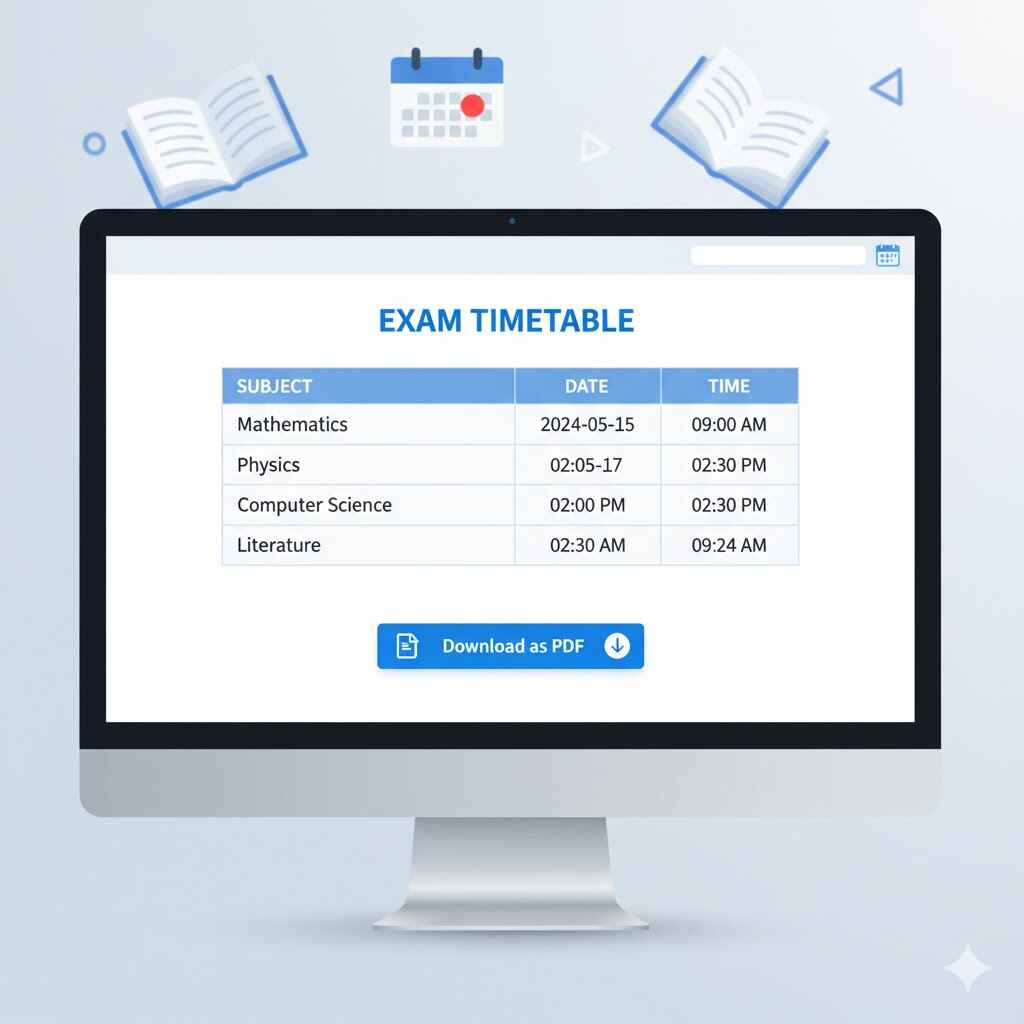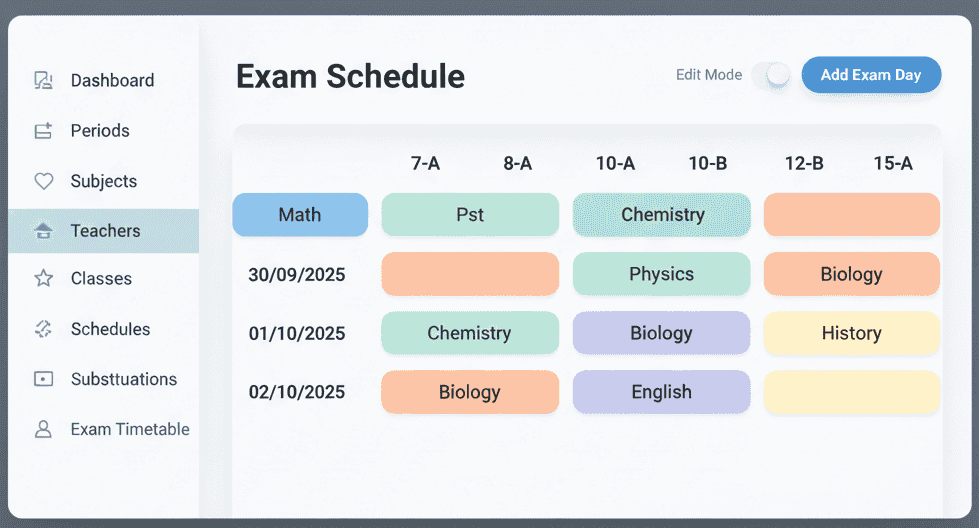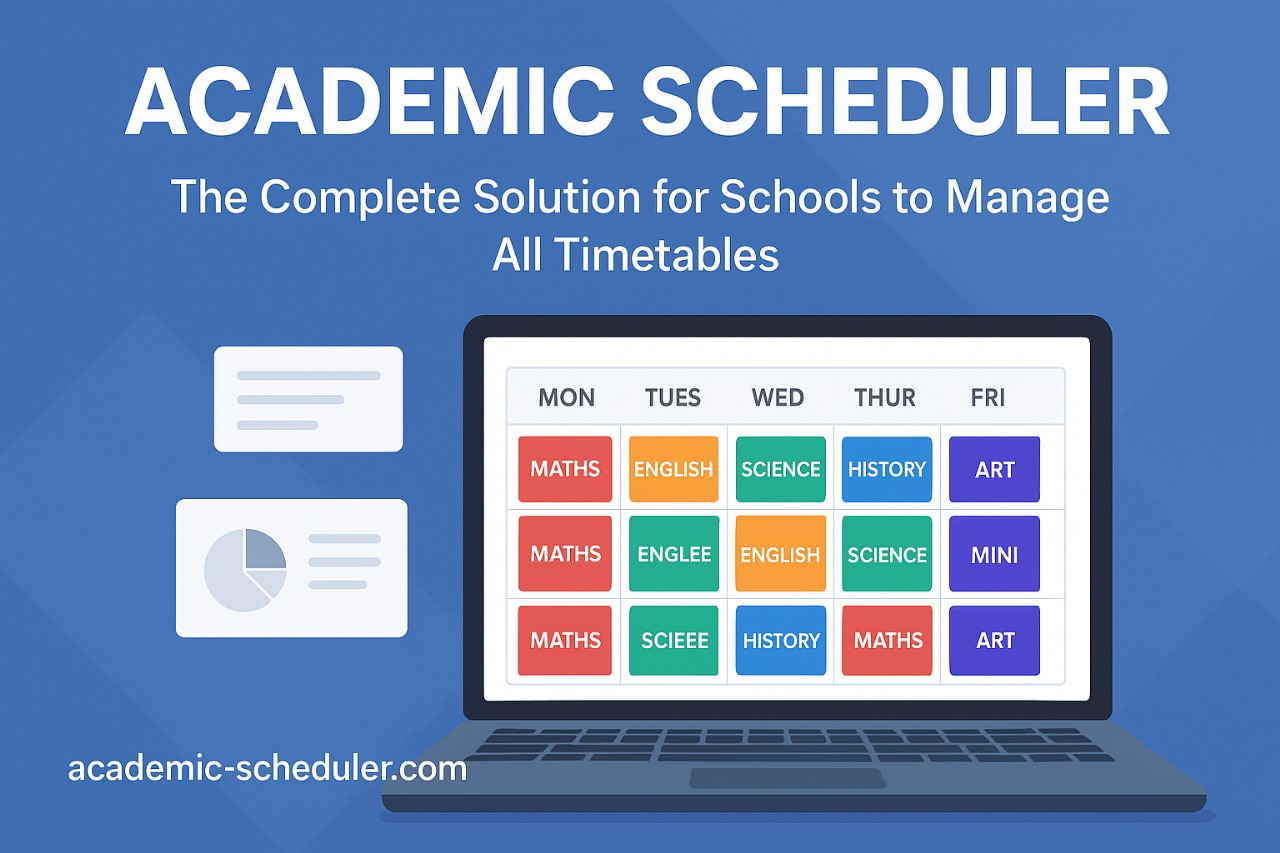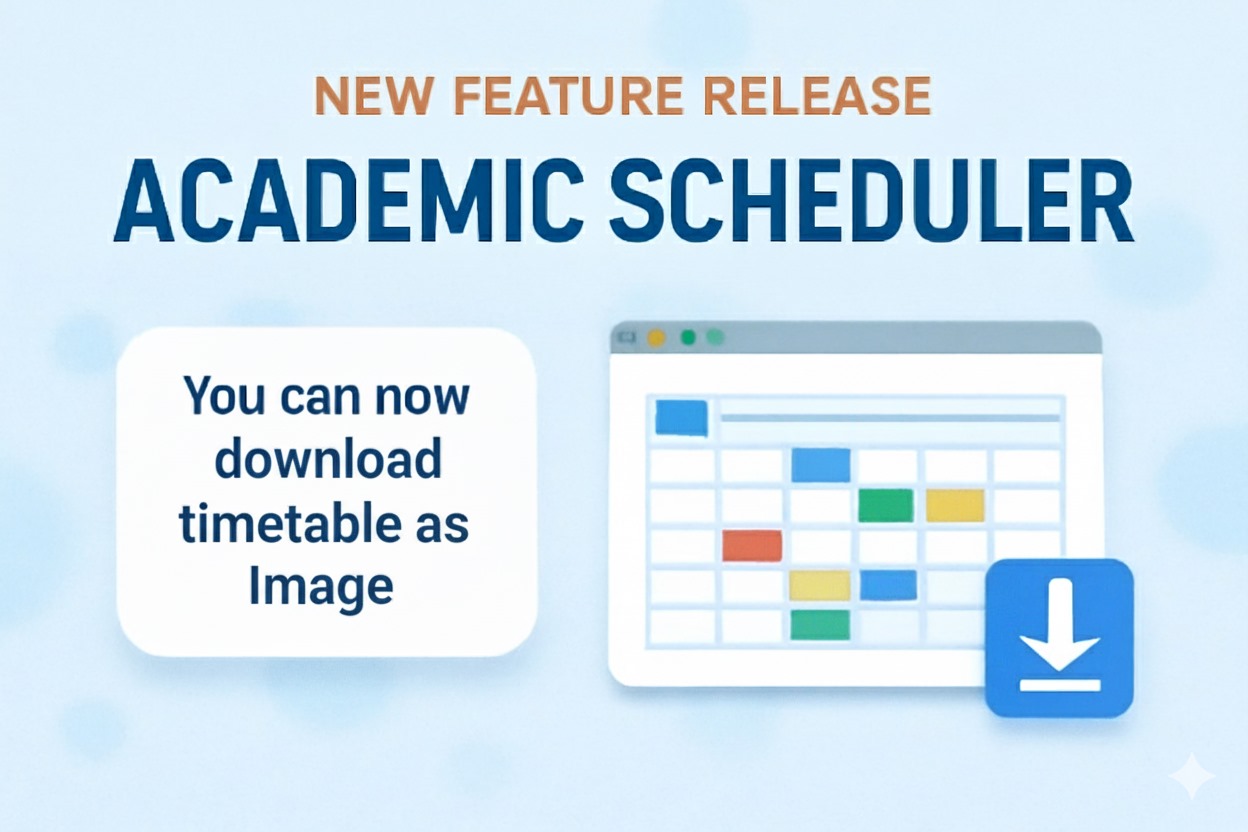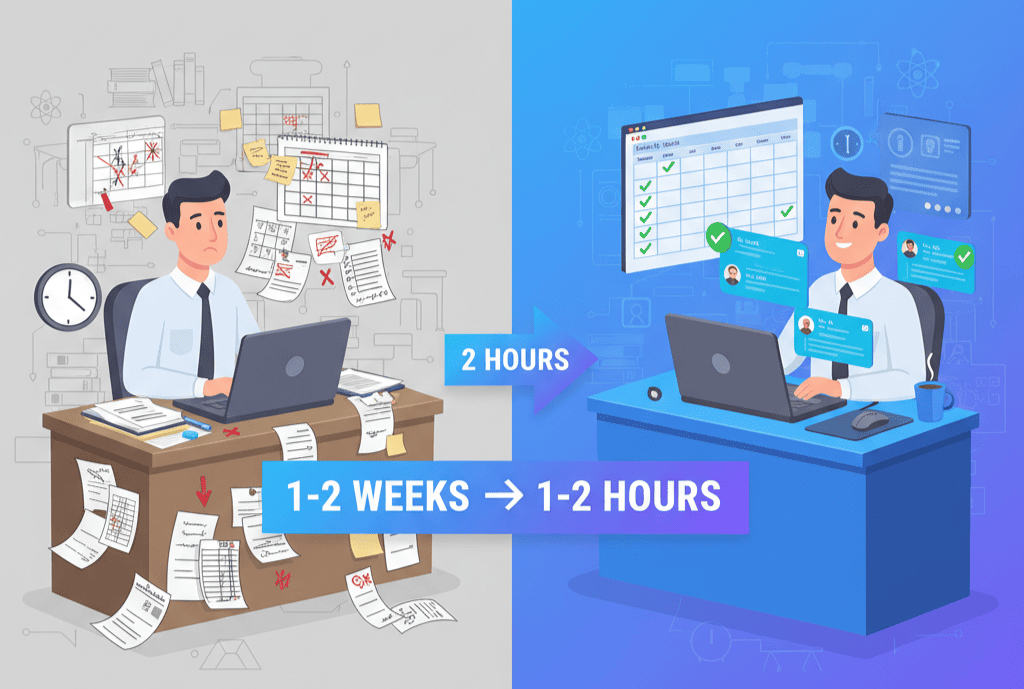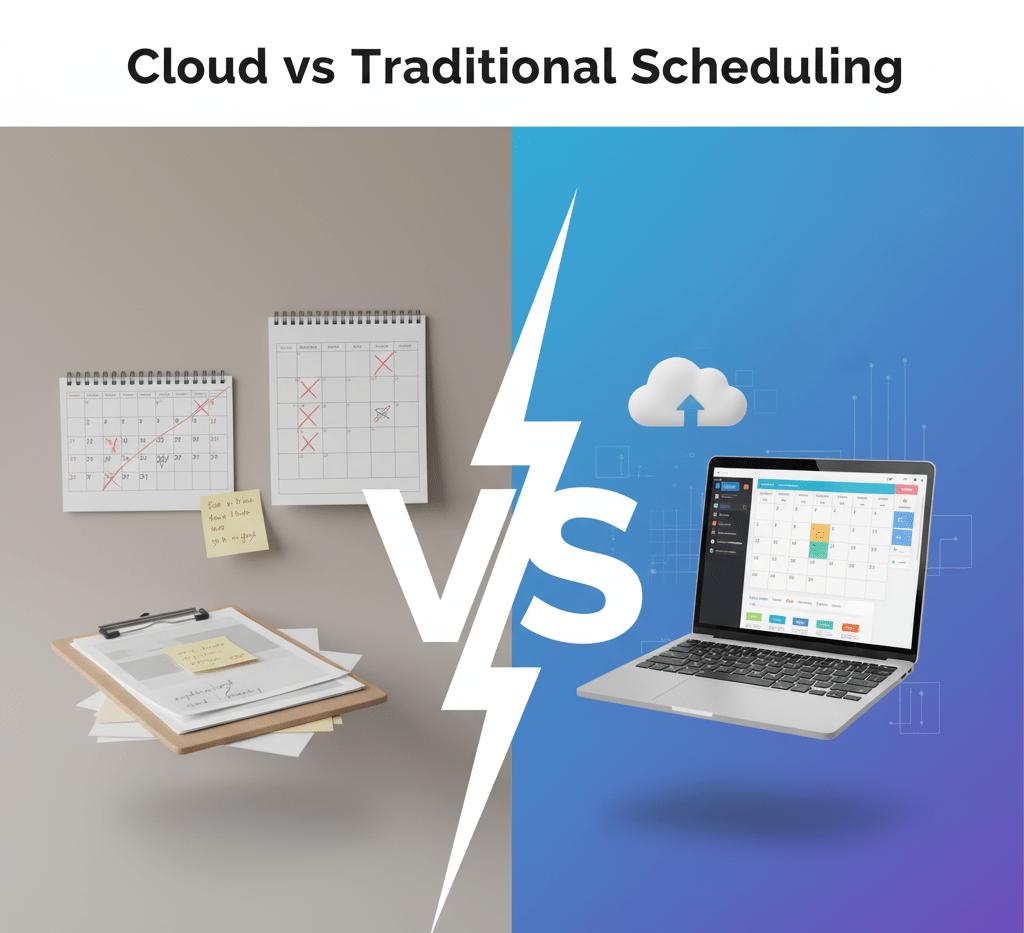Discover how modern schools are creating conflict-free timetables in minutes instead of hours. Learn proven strategies to eliminate scheduling clashes, optimize teacher assignments, and automate your school's timetable management with step-by-step instructions and practical examples.
How to Create Conflict-Free School Timetables in Under 10 Minutes
Creating a school timetable used to take hours or even days of manual work. School administrators would spend countless hours arranging classes, checking for conflicts, and making adjustments. But with modern automated timetable software, you can now create a complete, conflict-free school schedule in under 10 minutes.
In this comprehensive guide, you'll learn exactly how to create conflict-free timetables quickly, what tools to use, and the best practices that top schools follow for efficient timetable management.
Why Conflict-Free Timetables Matter
A conflict-free timetable ensures that no teacher is scheduled in two places at once, no classroom is double-booked, and students don't have overlapping classes. These scheduling conflicts can disrupt the entire school day, cause confusion among staff and students, and waste valuable teaching time.
Traditional manual timetabling methods using Excel spreadsheets or paper-based systems are prone to human error. Even experienced administrators can miss conflicts when juggling dozens of teachers, hundreds of students, and limited classroom resources.
The Old Way vs. The New Way of Creating School Timetables
Manual Timetabling (The Old Way)
Traditional timetable creation involves spending 10-20 hours manually arranging classes, using Excel spreadsheets with complex formulas, manually checking each teacher's schedule for conflicts, constant back-and-forth adjustments, high risk of overlooking scheduling clashes, and difficulty making last-minute changes.
Automated Timetabling (The New Way)
Modern automated timetable generators create complete schedules in minutes not hours, automatically detect and prevent conflicts, adjust instantly when changes are needed, optimize classroom and teacher utilization, generate multiple timetable versions for comparison, and export schedules in various formats like PDF, Excel, and CSV.
Step-by-Step: Creating a Conflict-Free Timetable in 10 Minutes
Step 1: Gather Your Basic Information (2 minutes)
Before creating your timetable, collect these essential details: list of all teachers and their subjects, class sections and student strength, available classrooms and their capacity, subjects per grade with weekly period count, teacher availability and constraints, special requirements like lab sessions or PE periods.
Step 2: Input Data into Timetable Software (3 minutes)
Modern school timetable software allows you to quickly input all necessary information. Enter teacher names and assign their subjects, add all class sections with student numbers, list available classrooms and facilities, define subject requirements and weekly periods, set teacher preferences and availability constraints, specify any fixed periods or constraints.
Most automated timetable generators support bulk import from Excel, which saves significant time if you already have this data in spreadsheet format.
Step 3: Set Your Scheduling Rules and Constraints (2 minutes)
Configure the rules that your timetable must follow. Define working days and daily time slots, set maximum periods per day for each subject, specify teacher workload limits, add break times and lunch periods, configure room-specific constraints for labs or special facilities, set rules to avoid back-to-back difficult subjects.
Step 4: Generate Your Automated Timetable (1 minute)
This is where automation shines. Click the generate button and let the software create your timetable. The automated timetable generator will process all constraints, check for scheduling conflicts automatically, optimize teacher and classroom assignments, balance subject distribution throughout the week, and produce a conflict-free timetable in seconds.
Step 5: Review and Make Minor Adjustments (2 minutes)
Once generated, review the timetable for any preferences or improvements. Check if subject distribution looks balanced, verify teacher workloads are reasonable, ensure no unintended patterns exist, and make minor manual adjustments if needed. The best timetable software includes drag-and-drop editing with real-time conflict detection, so any manual changes immediately show if they create new conflicts.
Key Features That Prevent Timetable Conflicts
Automatic Conflict Detection
The most critical feature for conflict-free scheduling is real-time conflict detection. Good timetable software will instantly alert you if a teacher is assigned to multiple classes at the same time, a classroom is double-booked, a student group has overlapping classes, or resource constraints are violated.
Teacher Availability Management
Track which teachers are available during which periods. The system should prevent scheduling teachers during their unavailable slots, respect maximum teaching hour limits, and account for part-time teacher schedules.
Room Capacity and Type Constraints
Ensure classes are assigned to appropriate rooms by matching class size to room capacity, assigning lab subjects to laboratory rooms, and reserving special facilities for specific subjects.
Subject Distribution Rules
Prevent scheduling conflicts by avoiding consecutive difficult subjects, distributing subjects evenly across the week, ensuring adequate gaps between same-subject periods, and balancing morning and afternoon schedules.
Common Timetable Conflicts and How to Avoid Them
Teacher Double-Booking
This occurs when a teacher is scheduled for two different classes at the same time. Automated systems prevent this by checking teacher availability before assigning any period, maintaining a real-time view of teacher schedules, and flagging conflicts instantly during manual edits.
Classroom Clashes
Multiple classes assigned to the same room simultaneously. Prevention methods include tracking room occupancy in real-time, considering room capacity against class size, and reserving specialized rooms for specific subjects only.
Resource Conflicts
Labs, sports facilities, or special equipment needed by multiple classes. Solutions include creating a resource calendar separate from room scheduling, limiting lab subjects to available lab slots, and scheduling shared resources in advance.
Student Group Overlaps
When students from one section have electives that conflict with their core schedule. Avoid this by grouping elective subjects in the same time slots, creating elective blocks that don't overlap with core subjects, and tracking individual student schedules for complex cases.
Best Practices for Maintaining Conflict-Free Timetables
Start with a Clean Data Set
Accurate input data is essential for conflict-free timetables. Verify all teacher information is current and correct, confirm classroom availability and capacities, double-check subject requirements and period counts, and update constraints whenever staffing changes.
Use Constraint-Based Scheduling
Define hard constraints that must never be violated, set soft constraints that are preferences, and let the automated system optimize within these boundaries.
Plan for Substitutions
Even perfect timetables face disruptions due to teacher absences. Use teacher substitution management systems that find available substitutes automatically, prevent creating new conflicts when assigning substitutes, and maintain substitute teacher qualification records.
Regular Reviews and Updates
Review your timetable weekly for any issues, update teacher availability as it changes, adjust room assignments if needed, and gather feedback from teachers and students.
Keep a Backup Version
Always maintain a working copy before making major changes, export timetables regularly in multiple formats, and document any special constraints or decisions.
Advanced Tips for Lightning-Fast Timetable Creation
Use Templates for Recurring Patterns
Save time by creating timetable templates for standard schedules, reusing previous semester layouts with updates, and defining subject pattern templates for different grades.
Leverage Bulk Import Features
Import teacher data from HR systems via Excel, upload classroom information in bulk, and transfer subject requirements from curriculum documents.
Automate Repetitive Tasks
Set up default constraints that apply to all timetables, create rules for standard break times and lunch periods, and define typical teacher workload distributions.
Generate Multiple Scenarios
Modern software can create several timetable versions, allowing you to compare different scheduling approaches, test various constraint combinations, and choose the most balanced option.
How to Handle Special Cases and Exceptions
Part-Time Teachers
Mark specific available days and time slots, set maximum weekly hours, and ensure they're not scheduled outside their availability.
Shared Teachers Across Campuses
Block travel time between campuses, coordinate with other campus schedules, and minimize cross-campus assignments.
Lab and Practical Sessions
Schedule consecutive periods for extended labs, ensure proper equipment availability, and assign qualified lab assistants.
Exam Periods
Use specialized exam timetable features to prevent student exam clashes, distribute exams evenly across exam period, and assign appropriate invigilators.
Measuring Timetable Quality
A good conflict-free timetable should have zero scheduling conflicts, balanced teacher workloads across all staff, even distribution of subjects throughout the week, optimal classroom utilization rates, minimal idle periods for teachers and students, and high satisfaction ratings from staff.
Track these metrics using timetable analytics dashboards available in modern scheduling software.
Choosing the Right Timetable Software
When selecting automated timetable software for your school, look for robust automatic conflict detection, intelligent constraint-based scheduling, easy data import and export options, drag-and-drop manual editing capabilities, teacher substitution management, multiple view options for daily, weekly, and monthly schedules, secure sharing with role-based access, mobile accessibility for teachers and staff, and analytics and reporting features.
The ROI of Automated Timetable Management
Schools that switch from manual to automated timetabling typically see time savings of 15-20 hours per timetable cycle, reduced scheduling errors by 95 percent or more, better resource utilization increasing classroom usage, improved teacher satisfaction due to balanced workloads, faster response to last-minute changes, and reduced administrative overhead.
The initial investment in timetable software pays for itself within the first semester through time savings alone.
Getting Started: Your First 10-Minute Timetable
Ready to create your first conflict-free timetable in under 10 minutes? Start by gathering your basic school data for all teachers, subjects, and classrooms. Choose a reliable automated timetable generator with conflict detection features. Input your data or import from Excel spreadsheets. Set your scheduling constraints and rules. Click generate and let the software create your timetable. Review the results and make minor adjustments. Export in your preferred format for PDF, Excel, or CSV. Share securely with your teaching staff.
Most schools are surprised by how quickly they can generate a complete, conflict-free timetable once they have the right tools in place.
Conclusion
Creating conflict-free school timetables no longer requires days of manual work and constant error-checking. With modern automated timetable software, schools can generate complete, optimized schedules in under 10 minutes while eliminating scheduling conflicts entirely.
The key is using intelligent automation that handles conflict detection, respects all your constraints, and optimizes resource allocation automatically. This frees up administrative time for more important tasks while ensuring teachers and students have reliable, conflict-free schedules.
Whether you're scheduling for a small school or a large institution with multiple campuses, automated timetable management is the solution that saves time, reduces errors, and improves overall scheduling quality.
Start transforming your timetable creation process today with automated scheduling software designed specifically for educational institutions.

